 |
| Let's see how Oni's graphics stack up against FAKK2 and Rune, games that came out shortly before Oni. |
| As you can see, Julie doesn't have to put up with a 2D splotch that follows her wherever she goes. Her shadow is rendered accurately, part for part, and in perspective. |
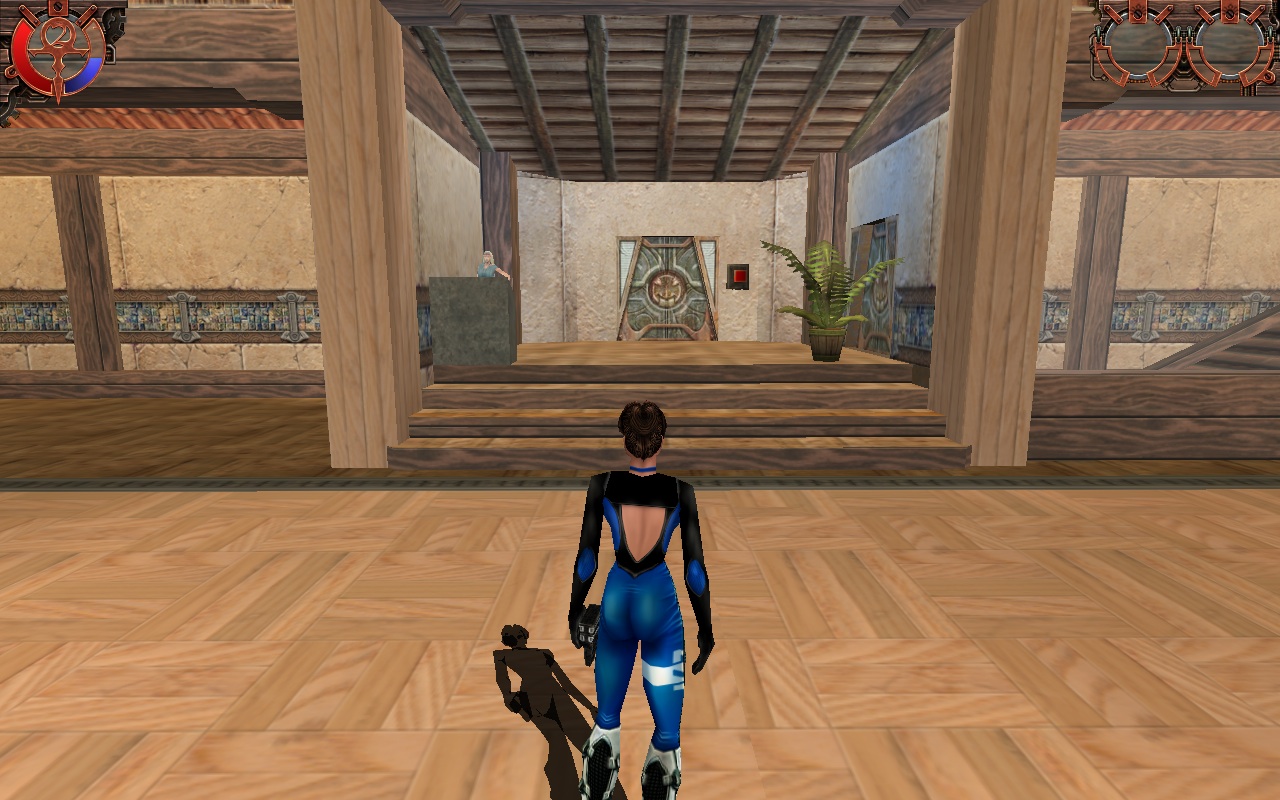 |
| Julie's shadow fades with increasing distance from the ground. |
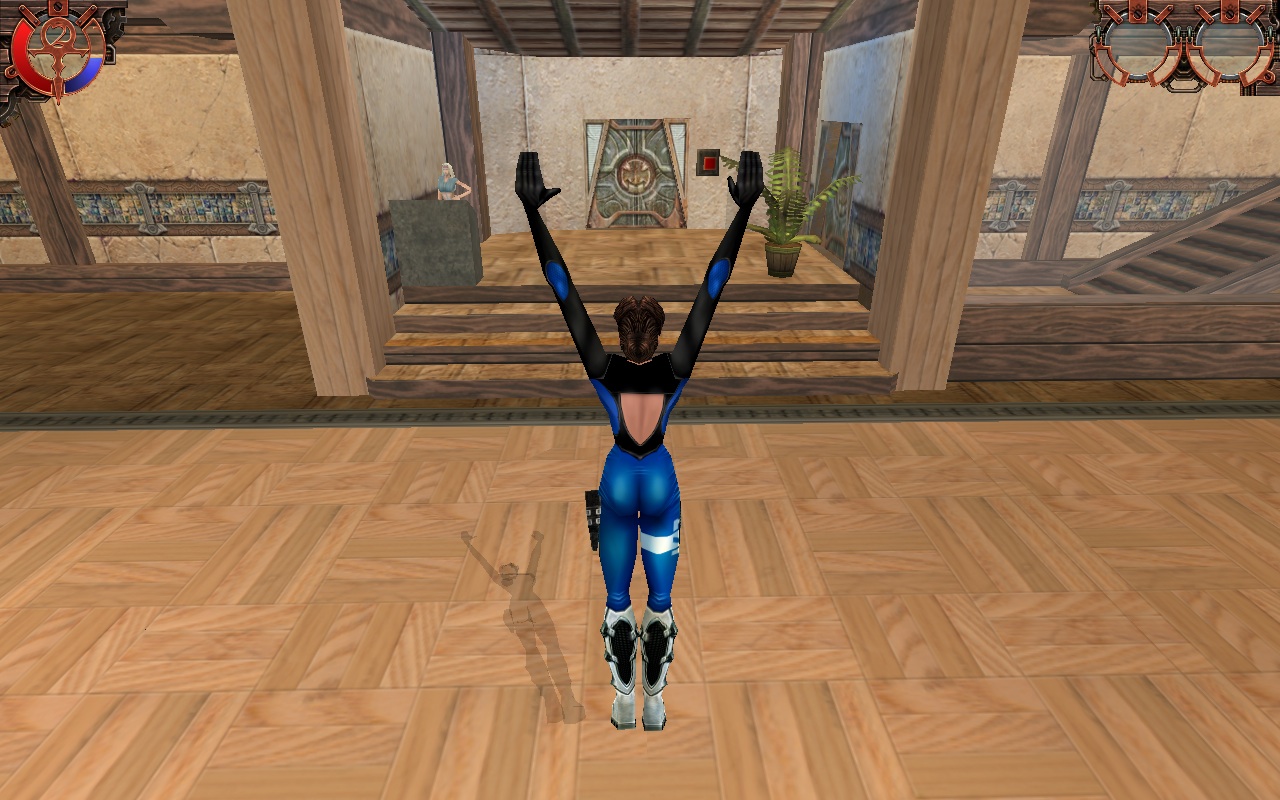 |
| Although you can only stand in water, not swim in it, it's surprisingly fun to do, thanks to the pretty ripples (which are admittedly just 2D textures), and also one other little detail -- the dynamic deformation of the water! It's true that the deformation does not actually respond to Julie's movement, but rather follows some preset cycle of undulation. Still, it's pretty damn impressive to see in a game from 2000. |
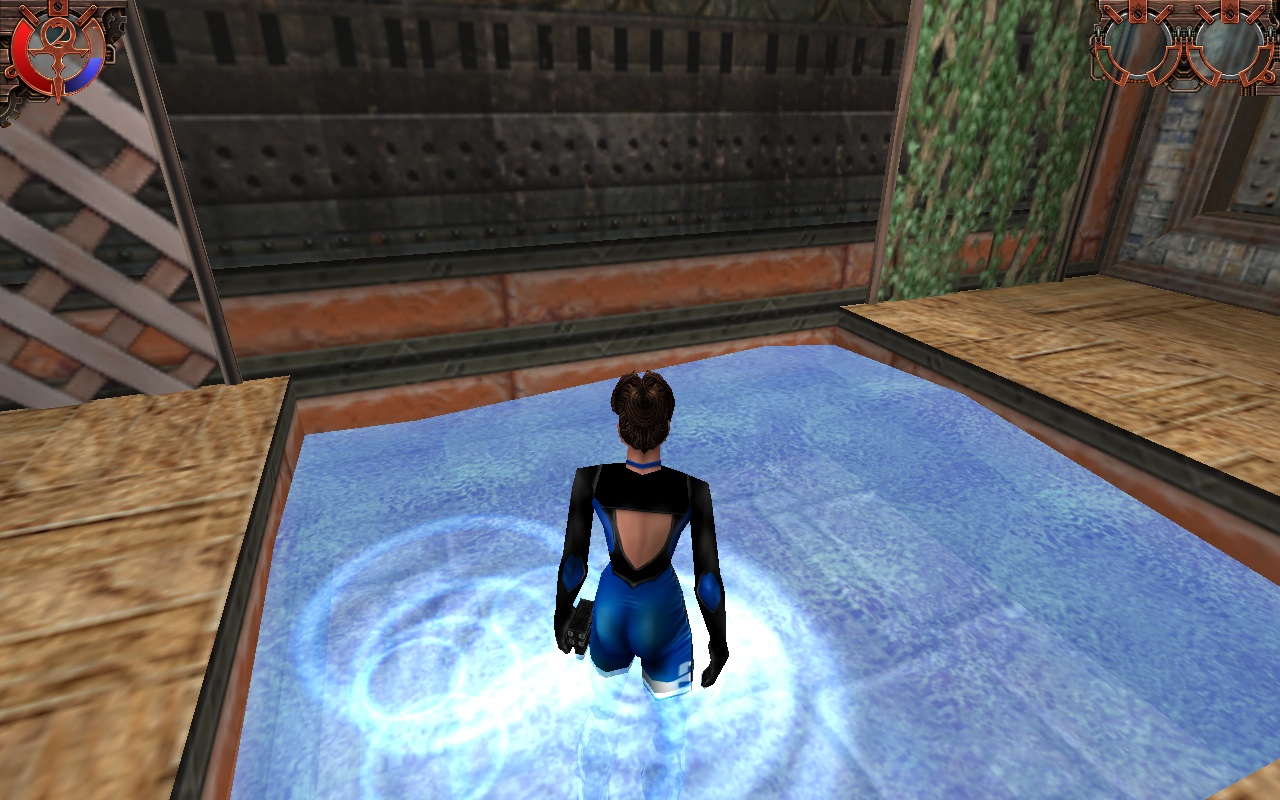 |
| If we can return to the subject of shadows, Oni is sadly topped even by 1994's Marathon. In this shot, the light coming from the other room actually flickers on and off. Of course, this is not actually dynamic lighting. It's baked in, so to speak, but still, it sets the mood in a way that Oni's lighting never does, even once. |
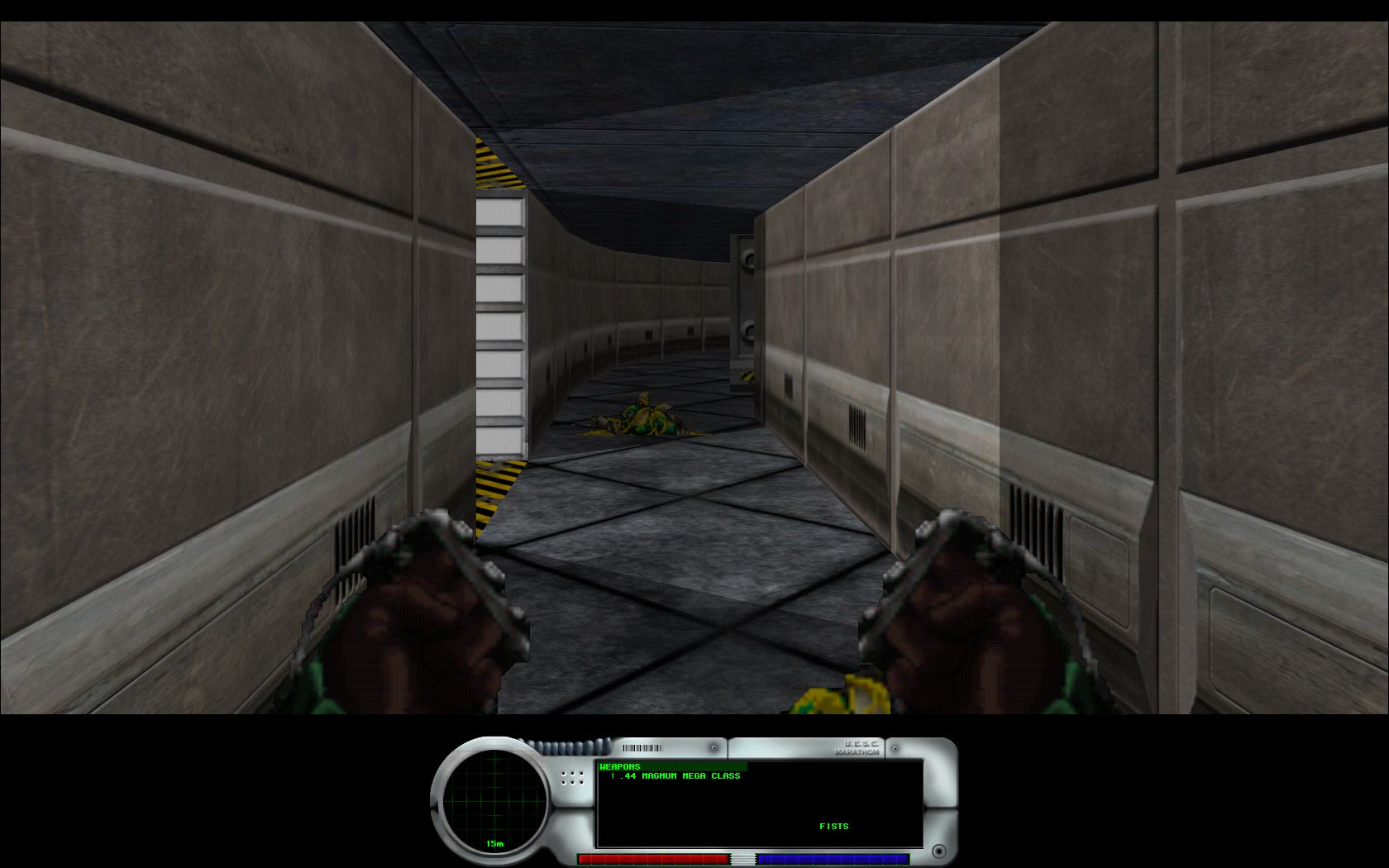 |
| Just another example of how Marathon used this effect. Interestingly, Oni could have looked like this too, but Bungie West seemed to lose interest in making it happen. See these two pre-beta screenshots for proof. |
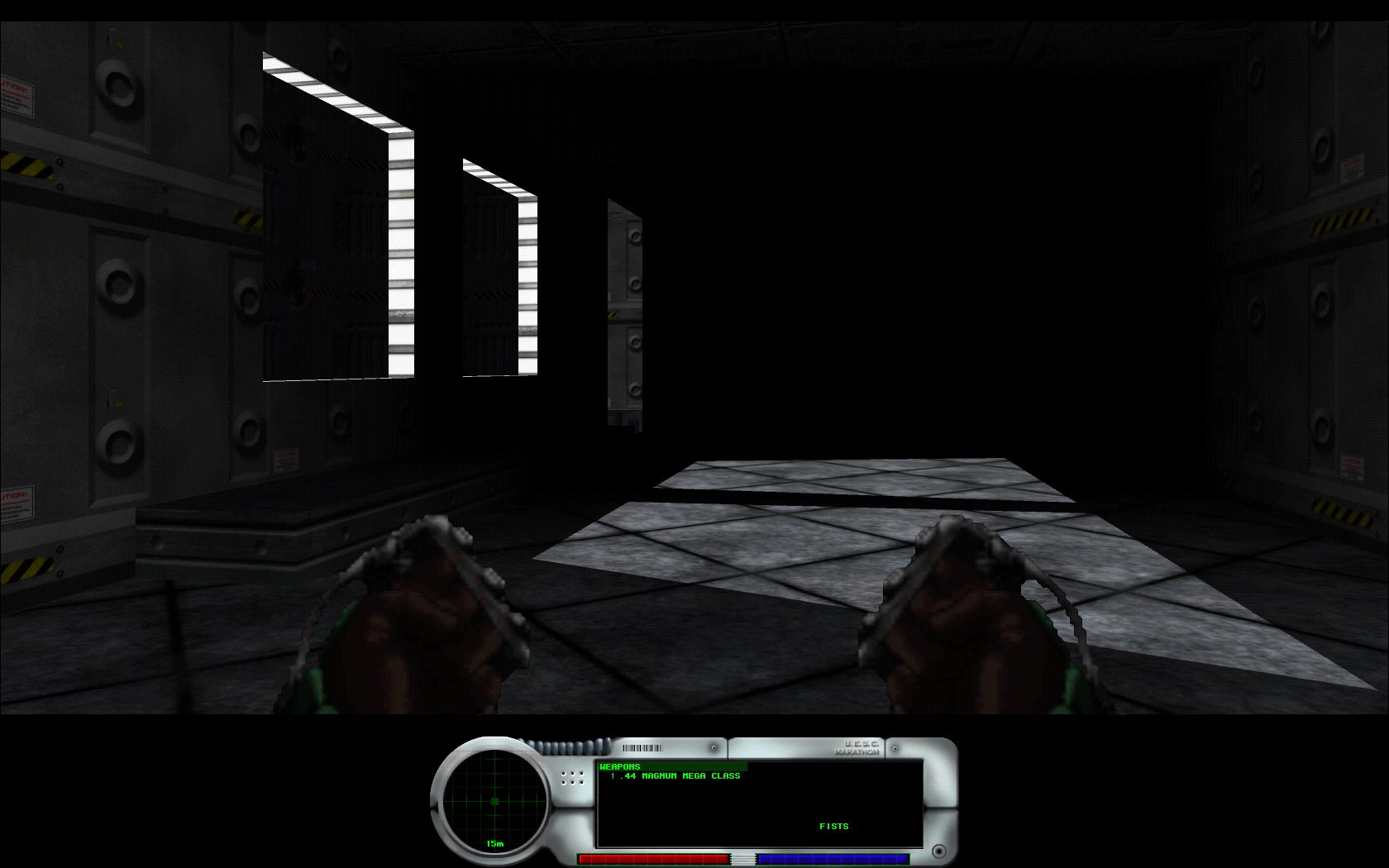 |
| Now let's look at how NOT to do shadows. Why does this crate, which is lit evenly from above by a grid of lights spanning the ceiling, have an angled shadow? Also, some shadows on this floor are sharp and some are soft. |
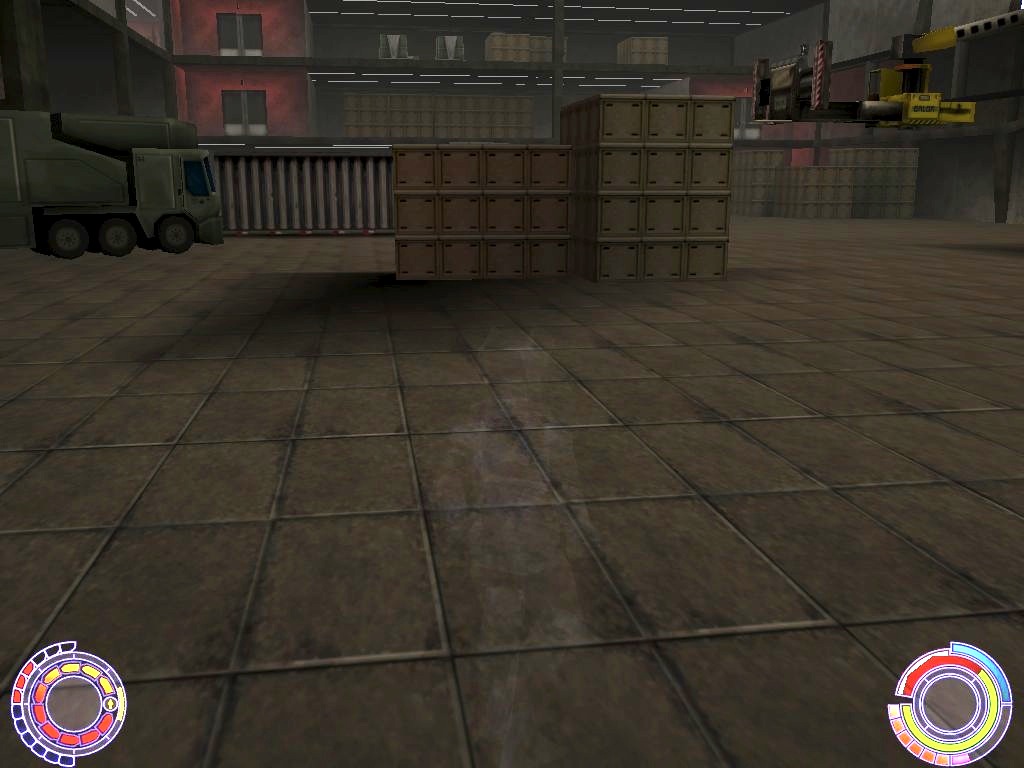 |
| The shadows on this back wall are probably due to the interruption of the lights running along the edge of the floor, but I can't begin to explain why the shadow is shaped that way, especially that triangle of darkness on the floor. |
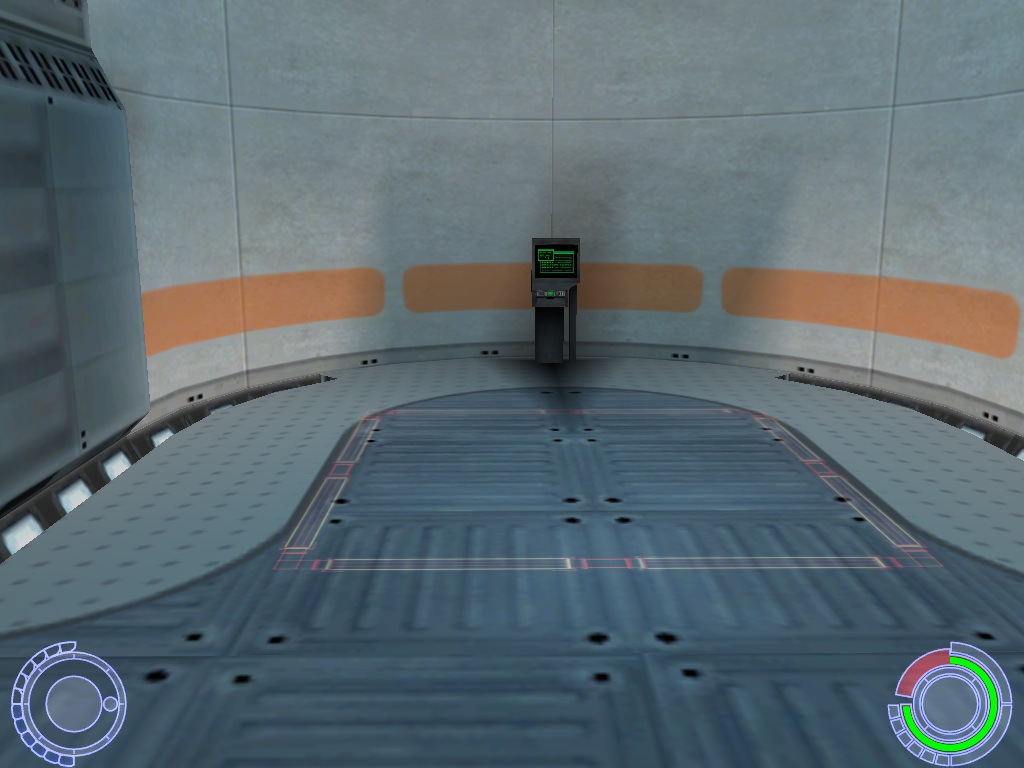 |
| I think this one speaks for itself (ignore Konoko here, someone was messing with character rendering). Oni's shadowing was pre-rendered by Lightscape, so how did it turn out so badly? |
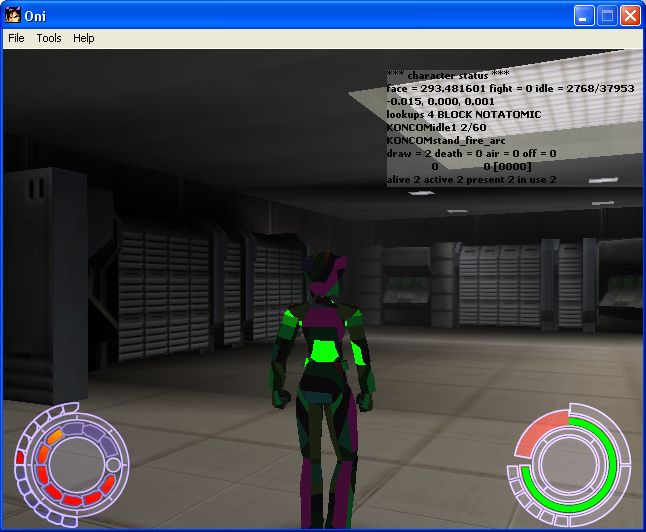 |
| Here's a still frame from the 1999 trailer. The lobby textures changed dramatically by 2001, but that's not what I want you to notice. Look at the light on the wall on the right edge of the screen. Now look at the next picture. |
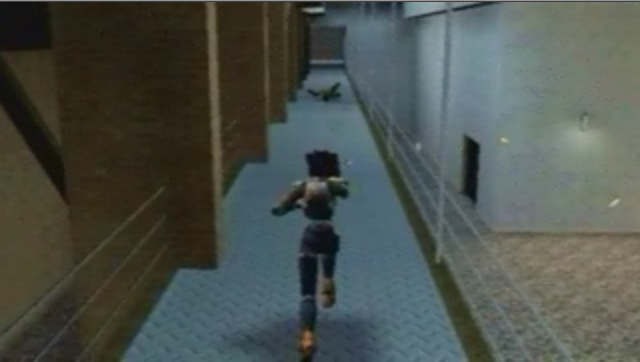 |
| Here's what this wall looked like in 2001. The model of the wall-mounted light itself is now a simple rectangle, and the only "lighting" taking place is in the form of a 2D light flare sprite. What the blam? |
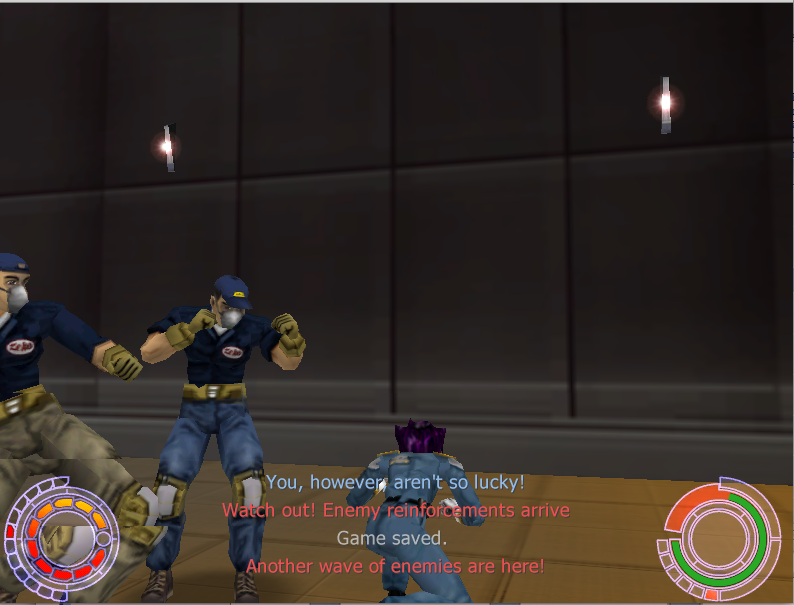 |
| Griffin is angry and determined to get some answers. Answers as to how the textures behind him could possibly make it into a shipping game. |
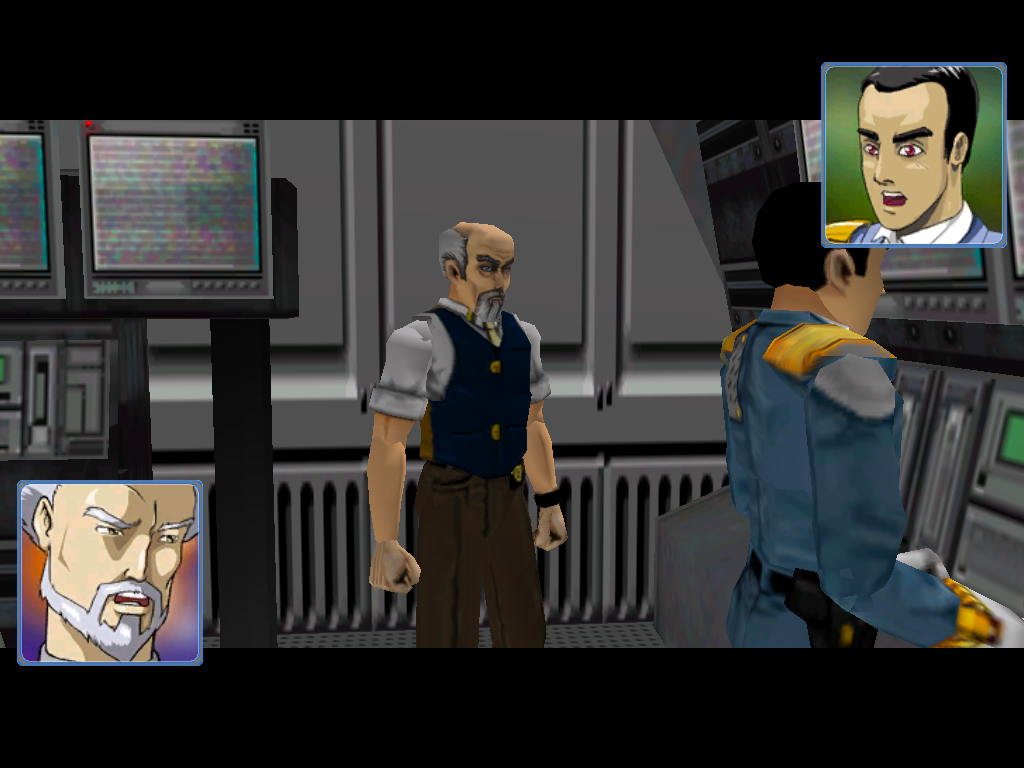 |
| Once in a while, Oni catches you off-guard with scenes that actually look really good. Here, a pleasant mix of color in the soft, baked-in lighting makes the scene come alive. Why didn't they do this everywhere? Did they just run out of time? |
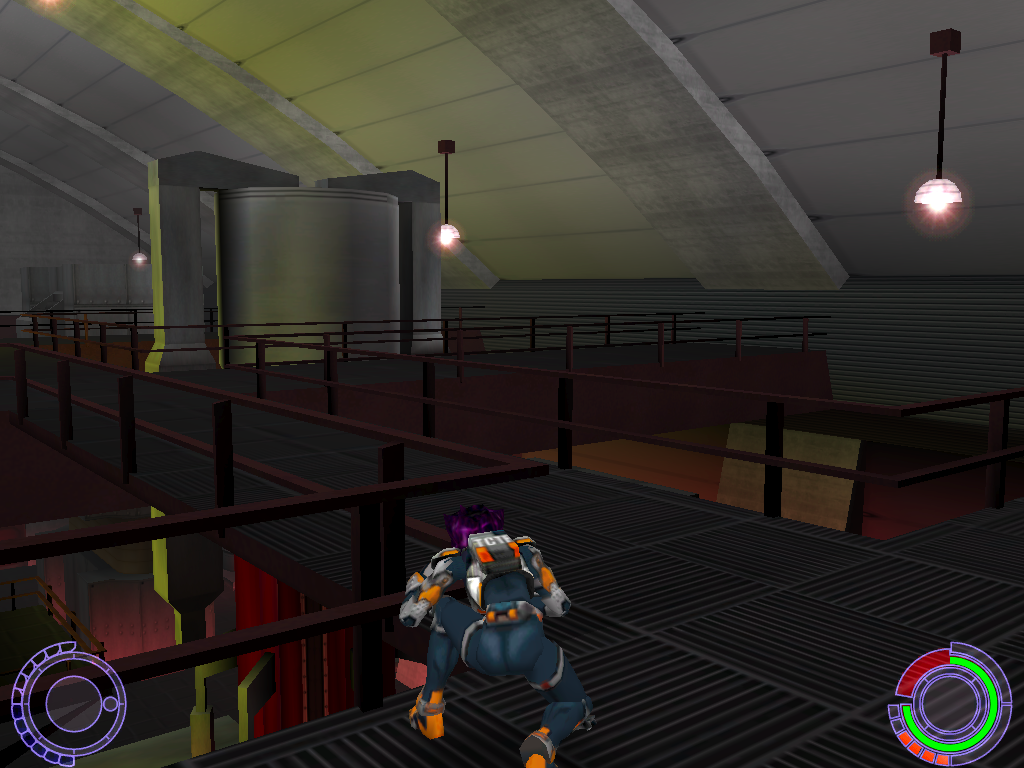 |
| One of these days, I hope someone can explain to me how this is even possible. A dynamic rippling light emanates from this teleporting gateway, rendered by Rune's Human Head engine. |
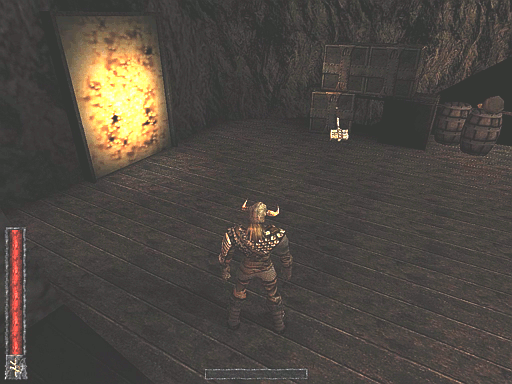 |
| More of Rune's dynamic lighting. The elevator has a torch on it, which progressively lights less of the scene as the elevator descends. Technically the lighting solution is not correct, as the floor should be immediately occluding the torchlight from our perspective, but it still "feels" pretty right. Again, lighting is essential to creating an immersive environment. Part of the reason Oni's environments often feel lifeless is the static lighting. |
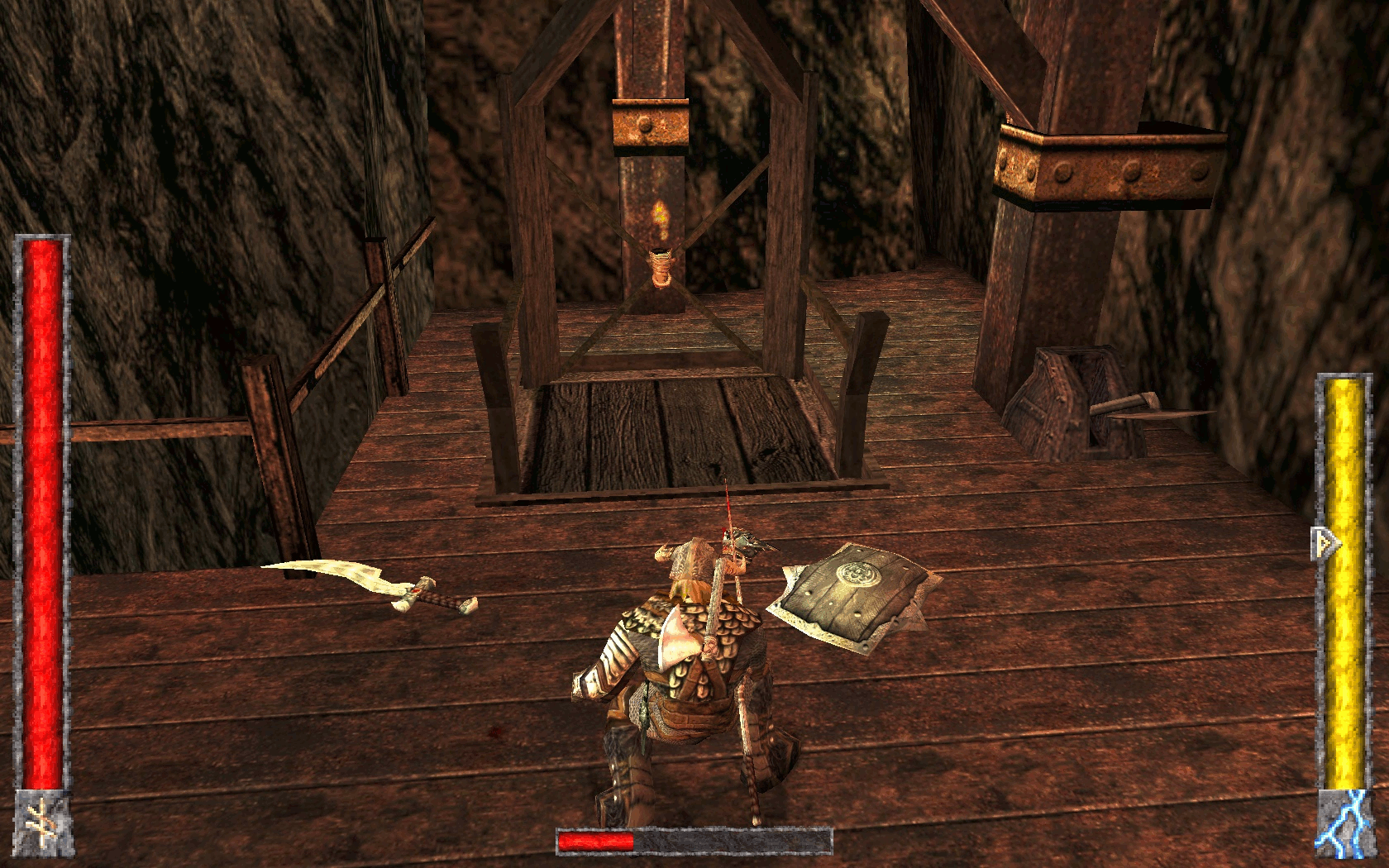 |
| In this dark corridor, a thin layer of water covers the floor, rendering it reflective. Rune rarely shows this ability off, so please excuse me for using such a dark, inscrutable image as an example. Notice the realistic touch of a brightness shift in the reflection. |
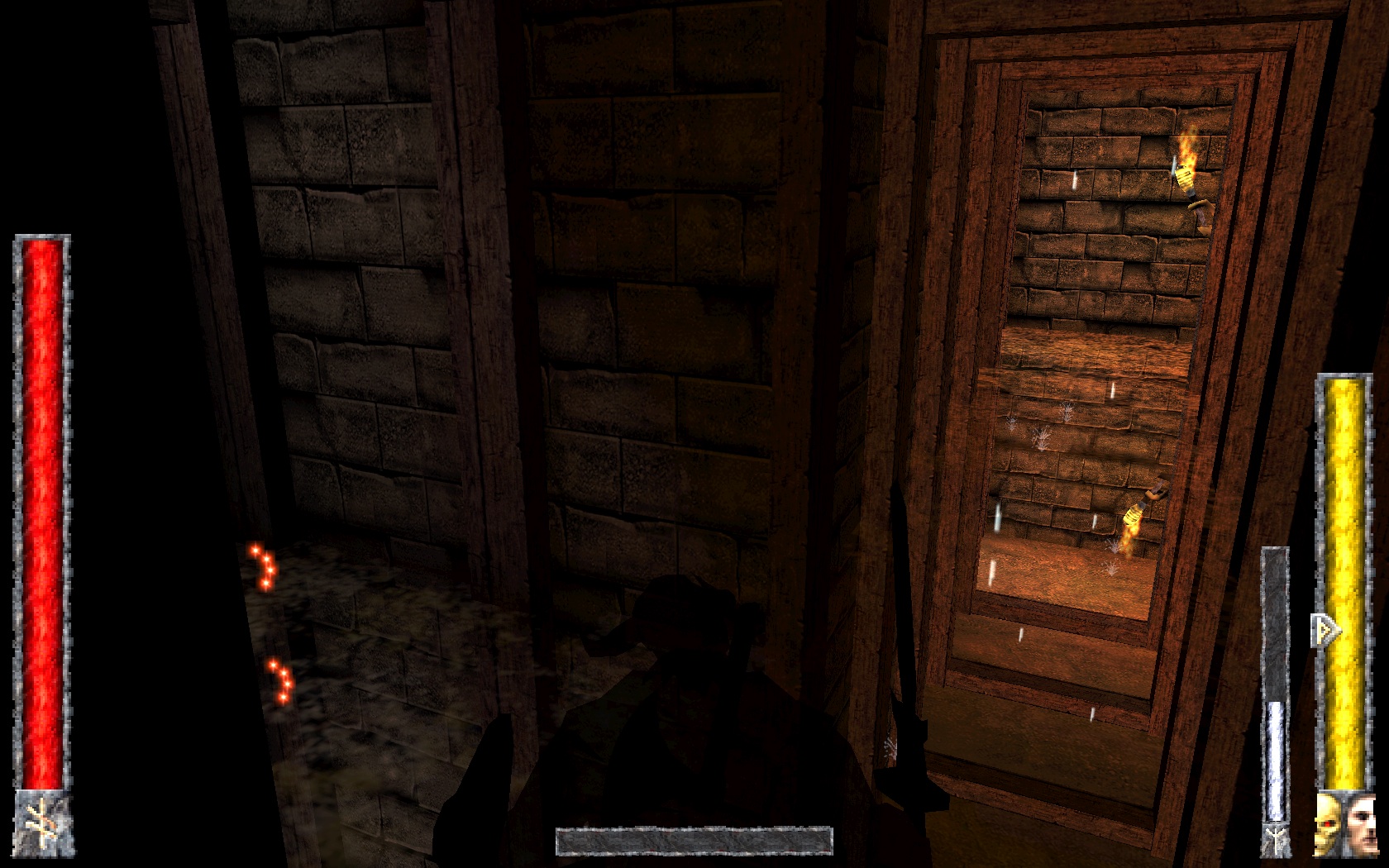 |
| Here you get to carry a torch, which dynamically lights your way through this dark level. Any torch on a wall can be picked up and carried. The torch can be used as an effective melee weapon, sometimes setting enemies on fire, however it will go out if swung around too much (you can re-light it if you find another torch on a wall). You have to drop the torch in order to pull out a weapon, which makes this level a tense experience. |
 |
| Not a great example, but this picture is intended to illustrate that Rune also creates real shadows for its character models, as FAKK2 does. Oni apparently had dynamic shadows at one time, as evidenced by various shots in the trailer (just look at Konoko's shadow on the catwalk, as seen in the trailer pic above, for one example). They were never traced shadows, though, just fuzzy blocks of shading applied to the ground. |
 |

















